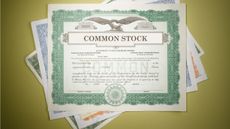Here’s What to Do with the Money Left Behind in Old 401(k) Accounts
First off, don’t lose track of it! You’d be surprised how many people forget about their old 401(k)s.


Recently, a Capitalize Research study revealed that Americans have left behind over $1 trillion untouched in their old 401(k)s. This implies that millions of employees are struggling to manage their retirement savings as they move from job to job, leading to the accumulation of money in these abandoned accounts.
The 401(k), a tax-advantaged savings plan, has helped revolutionize the American workforce since its enactment in 1978. However, millions of dollars are left unclaimed as people change jobs, relocate and subsequently forget about their old 401(k)s. When you lose track of a 401(k) at an old employer, your savings in that account stagnate, leaving an opportunity toward building a secure financial future squandered.
Even if you are contributing to a new plan with your current employer, leaving money behind in an old 401(k) account and forgetting about it harms your overall financial well-being, prevents you from building a cohesive financial plan and does not allow all your money to work for you and your goals in the best possible way.

Sign up for Kiplinger’s Free E-Newsletters
Profit and prosper with the best of expert advice on investing, taxes, retirement, personal finance and more - straight to your e-mail.
Profit and prosper with the best of expert advice - straight to your e-mail.
The Cons of Leaving Your 401(k) Behind
Risk of Losing Track of Old 401(k)s
Rolling over an old 401(k) or managing your savings during a job transition can be stressful and chaotic. Some people end up leaving behind an old account with the intention to revisit it later, only to forget about it or lose track of it as they are faced with other aspects of their job transition. This will make it difficult to put your savings to good use in a way that promotes your financial stability in the future.
As of now, if you have less than $5,000 in any old accounts, your previous employers will likely either cut you a check for the remaining balance or move the money into an IRA. It’s up to you to find it, though. (For more on how to do that, keep reading.)
Missing Out on Investment Opportunities
Do you know when you forget your old 401(k) accounts, you miss out on a chance for a solid investment plan? You were wise enough to set up a retirement plan to secure your financial freedom for the future. But, when you leave behind any amount of savings, it leads to loss of earning capacity.
Leaving behind money in an old retirement account also means that your savings dollars may not be invested in the most beneficial way possible for you. Staying on top of old accounts or rolling them over into your current plan can help you ensure you are investing every dollar with purpose, efficiency and your unique goals in mind.
How to Find an Old 401(k) Account
One of the easiest ways to begin locating your lost account is by contacting your previous employer or previous plan administrator first. They will have firsthand knowledge and records of your plan. Be sure to have your Social Security number and employment dates ready to be shared, and provide any previous 401(k) statements or other relevant documents if you have them.
If you can no longer trace the account with your former employer, run a search on the National Registry of Unclaimed Retirement Benefits. This site enables employers to connect former employees with their retirement contributions. You also have the option of searching for any filing on the U.S. Department of Labor's Abandoned Plan Database.
What to do With Your Leftover 401(k) Funds
Moving from one job to another and dealing with the surprises of life can be overwhelming, right? It is easy to forget or lose track of your previous 401(k) plan as you start focusing on your current retirement savings account and settle into your new job.
To maintain ease of access to your savings and make the most of your leftover 401(k)s, there are several options to choose from when deciding what to do with your old 401(k)s.
First, you can leave the money in the old 401(k) if you are sure you will not forget about it. The advantage of this option is your account maintaining a tax-deferred status. The downside is, if you have less than $5,000 your past employer can send a check to you (possibly triggering a tax bill) or to an IRA, which can attract some fees.
Rolling over your past 401(k) accounts into an individual retirement account ensures that you maintain good record-keeping of the funds, as they are all saved in one place. Even better, you will accrue more benefits, such as having more control over factors, such as account fees and access to a broader range of investments.
You can also choose to roll over your old 401(k) into your current employer's plan, as long as the plan allows it. This ensures you protect your savings in a tax-deferred account and have access to profitable investment options. Just ensure you understand the rules set in the new plan.
Ultimately, what you decide to do with your old 401(k) funds is a personal decision that requires you to critically weigh both the risks and benefits associated with the choices available in handling old funds. Make the best decision for your future by ensuring your funds are always in an account that offers favorable terms that optimize your investment returns.
Get Kiplinger Today newsletter — free
Profit and prosper with the best of Kiplinger's advice on investing, taxes, retirement, personal finance and much more. Delivered daily. Enter your email in the box and click Sign Me Up.

In March 2010, Andrew Rosen joined Diversified, bringing with him nine years of financial industry experience. As a financial planner, Andrew forges lifelong relationships with clients, coaching them through all stages of life. He has obtained his Series 6, 7 and 63, along with property/casualty and health/life insurance licenses. Andrew consistently delivers high-level, concierge service to all clients.
-
 Why You May Need a Medallion Stamp
Why You May Need a Medallion StampTransferring securities from one account to another often requires this extra step.
By Emma Patch Published
-
 How Dividend Reinvestments Work for Retirement
How Dividend Reinvestments Work for RetirementWant your retirement investments to keep growing? Here's what you should know about dividend reinvestment.
By Robert H. Yunich Published
-
 Would You Benefit From Investing in Cryptocurrency?
Would You Benefit From Investing in Cryptocurrency?Understanding the complexity of adding digital currency to your investments is critical, especially since drastic price changes can happen very quickly.
By Robert Cannon, MBA, CFF®, AIFA® Published
-
 Why Company Stock May Be Riskier Than Employees Realize
Why Company Stock May Be Riskier Than Employees RealizeStock compensation has its perks, but employees must be realistic (and unemotional) about their investments' prospects. Sometimes strategic sales are smart.
By Michael Aloi, CFP® Published
-
 Can You Be Fired for Going to Work When You're Contagious?
Can You Be Fired for Going to Work When You're Contagious?What's an employer to do when an employee shows up at the office with a cold or the flu and spreads germs to co-workers?
By H. Dennis Beaver, Esq. Published
-
 Social Security Fairness Act: Five Financial Planning Issues to Revisit
Social Security Fairness Act: Five Financial Planning Issues to RevisitMore money as a public-sector retiree is great, but there could be unintended consequences with taxes, Medicare and more if you're not careful.
By Daniel Goodman, CFP®, CLU® Published
-
 Social Security Warning: Five Missteps Too Many Women Make
Social Security Warning: Five Missteps Too Many Women MakeClaiming Social Security is complicated, and for women the stakes are high. What you don't know can cost you, so make sure you do know these five things.
By Daniela Dubach Published
-
 To Buck the Third-Generation Curse, Focus on the Family Story
To Buck the Third-Generation Curse, Focus on the Family StoryThe key is to motivate the next generations to contribute to the family business in a productive way. You can look to Lawrence Welk's family as a prime example.
By John M. Goralka Published
-
 How Roth Accounts Can Ease Your Tax Burden in Retirement
How Roth Accounts Can Ease Your Tax Burden in RetirementStrategic Roth IRA conversions can set you up for tax-free income in retirement and a tax-free inheritance for the people you love.
By Jim Hanna Published
-
 Are You a High Earner But Still Broke? Five Fixes for That
Are You a High Earner But Still Broke? Five Fixes for ThatIf you're a HENRY (a higher earner, not rich yet) but feel like you still live paycheck to paycheck, there are steps you can take to get control of your financial future.
By Mallon FitzPatrick, CFP®, AEP®, CLU® Published